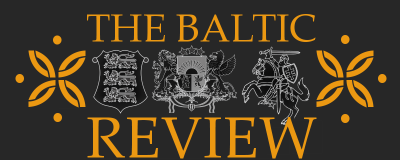Estonia and its membership into the European Union
Estonia began its accession process in 1998 in its first negotiation with the EU. Estonia’s early attempt to align itself with the EU stemmed from its desire to create new allies in order to combat its economic problems. Estonia’s new government focused on cooperation with other EU Member States as integral to its survival as a young nation
The EU required Estonia to harmonize its laws and policies with EU requirements. Estonia began its pre-accession by passing new laws. It requested for the EU to allow it to have transitional periods concerning its transition in certain areas that appeared to be more challenging.
The EU itself required transitional periods for free movement of persons, transport and agriculture.
In other sectors, Estonia was able to fully implement EU measures on Company Law, Competition Policy, Economic and Monetary Union, Statistics, Social Policy and Employment, Industrial Policy, Small and Medium-Sized Enterprises, Science and Research, Education and Training, Telecommunications and Information Technologies, Culture and Audiovisual Policy, Regional Policy and Coordination of Structural Instruments.
Steps Taken
In August 1991, the European Community recognized Estonia after it had regained its independence. The European Commission officially opened its Delegation in Tallinn in 1996. Estonia submitted its application to accede to the EU in November 1995 and started negotiations in March 1998. These were concluded at Copenhagen in December 2002. The draft Accession Treaty was approved by the Estonian Government on April 8, 2002, and Estonia joined the EU on May 1, 2004.
EU financial and technical assistance to Estonia was first provided under Poland and Hungary Assistance for Restructuring of their Economies (PHARE), which was expanded to apply to other Central European countries in their transition to market-based economies and democracies. PHARE’s objectives included strengthening public administrations and promoting economic and social stability. Early assistance focused on legal reform, infrastructure restructuring, and privatization. Estonia’s trade practices have been largely transformed under early programs.
Estonia also implemented rural development programs. Estonia received monetary assistance through the Special Accession Program for Agricultural and Rural Development (SAPARD). SAPARD was a program established to assist countries of Eastern and Central Europe that needed to have their agricultural policies comply with the EU. The main objectives focused on agricultural reform to improve the efficiency of agricultural competition and production.
The following chart outlines the objectives and funding allocations for those objectives:
[table id=3 /]
Public Awareness and Education
A referendum on Estonia’s entry into the EU was held in September 2003. The ballot addressed both accepting new text in the Estonian Constitution, which allowed for accession into the EU, and whether Estonia should join the EU. Estonia’s voter turnout was estimated at 64.02%. 66.84% of those who participated in the referendum supported EU accession. The Parliament then ratified the Accession Treaty by simple majority.
An important task during the accession process and throughout integration into the EU has been public awareness campaigns. Estonia has provided complete news on the accession process to be available on Estonia’s Foreign Ministry webpage. Also, citizens are provided with a number of EU information centers and free EU “infophone” service. Two major centers are located in the National Library and the Eurodocumentation Centre, which is located in the Tartu University Library. There are information distributors attached to each of the county governments. Many governmental institutions also regularly publish information leaflets that are available in libraries, information centers and other public buildings. More specific information is distributed by all institutions whose work involves dealing with the EU. Every citizen has the right to turn to whichever institution interests him/her and request additional information.
References
Rural development programmes for Estonia, Lithuania and Slovakia endorsed, Europa
Europa, Enlargement Candidate Country
Estonia in the European Union
[divider]About Estonia[/divider]
Political system: Republic
Capital city: Tallinn
Total area: 45 000 km²
Population: 1.3 million
Currency: euro
Official EU language: Estonian
Estonia, the most northerly of the Baltic states, regained its independence from the Soviet Union in 1991. It is a mainly flat country on the eastern shores of the Baltic Sea, with many lakes and islands. Much of the land is farmed or forested.
The Estonian language is closely related to Finnish, but bears no resemblance to the languages of the other Baltic republics, Latvia and Lithuania, or to Russian. About one quarter of the population is of Russian-speaking origin.
The capital, Tallinn, is one of the best-preserved mediaeval cities in Europe, and tourism accounts for 15% of Estonian GDP. The economy is driven by engineering, food products, metals, chemicals and wood products.
Throughout history, many other nations that ruled the region – Danes, Germans, Swedes, Poles and Russians – have influenced Estonian cuisine. Among the traditional dishes are marinated eel, blood sausage and sauerkraut stew with pork.
Famous Estonians include the writer Jaan Kross whose work has been translated into at least 20 languages, the author of the national epic (Kalevipoeg) Friedrich Reinhold Kreutzwald, and the writer, film-maker, diplomat and politician Lennart Meri.




























Comments